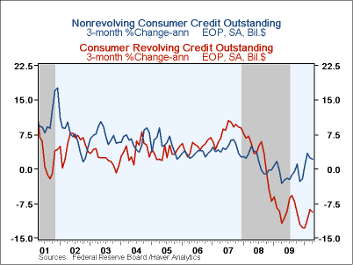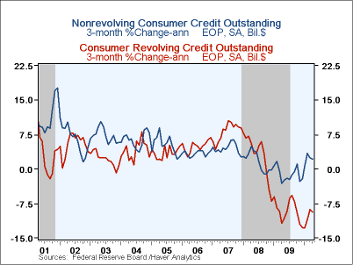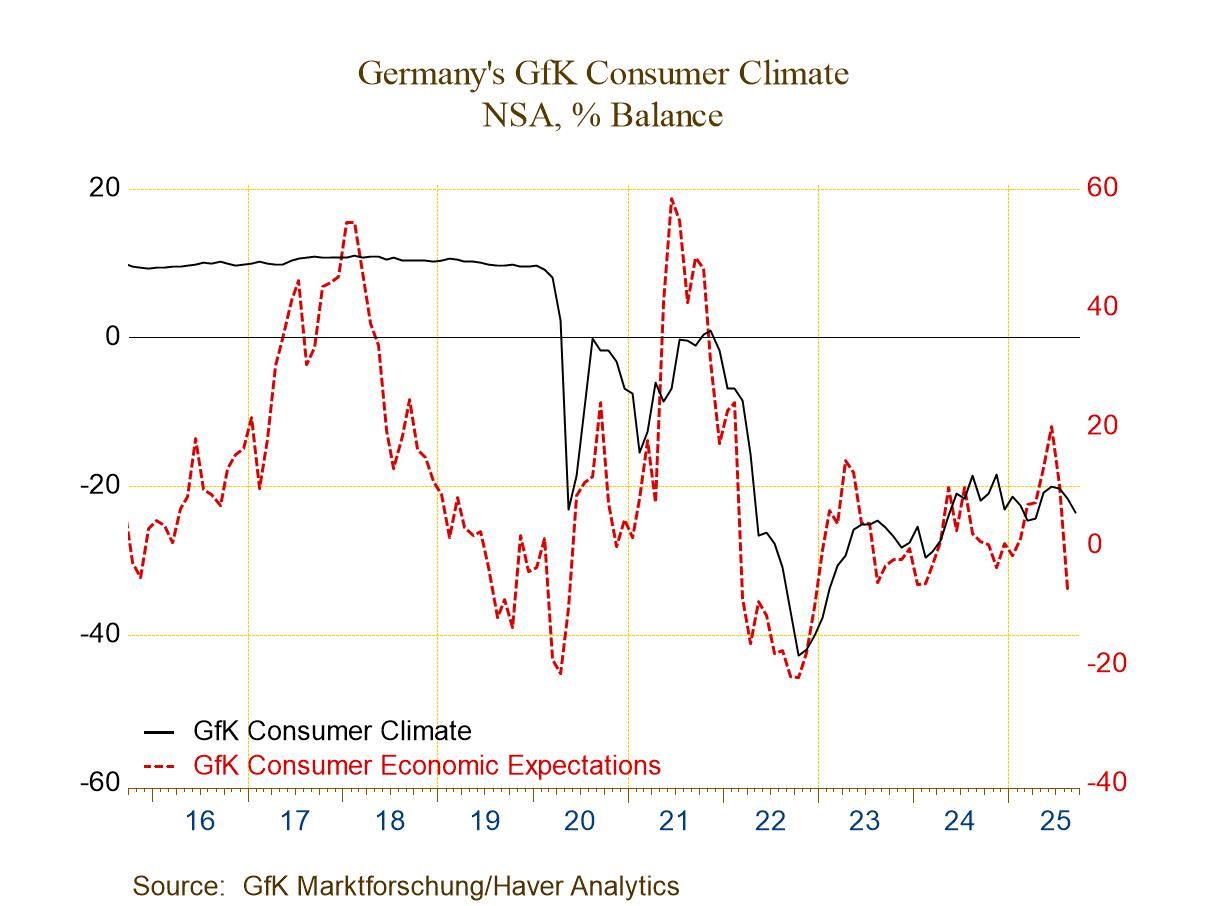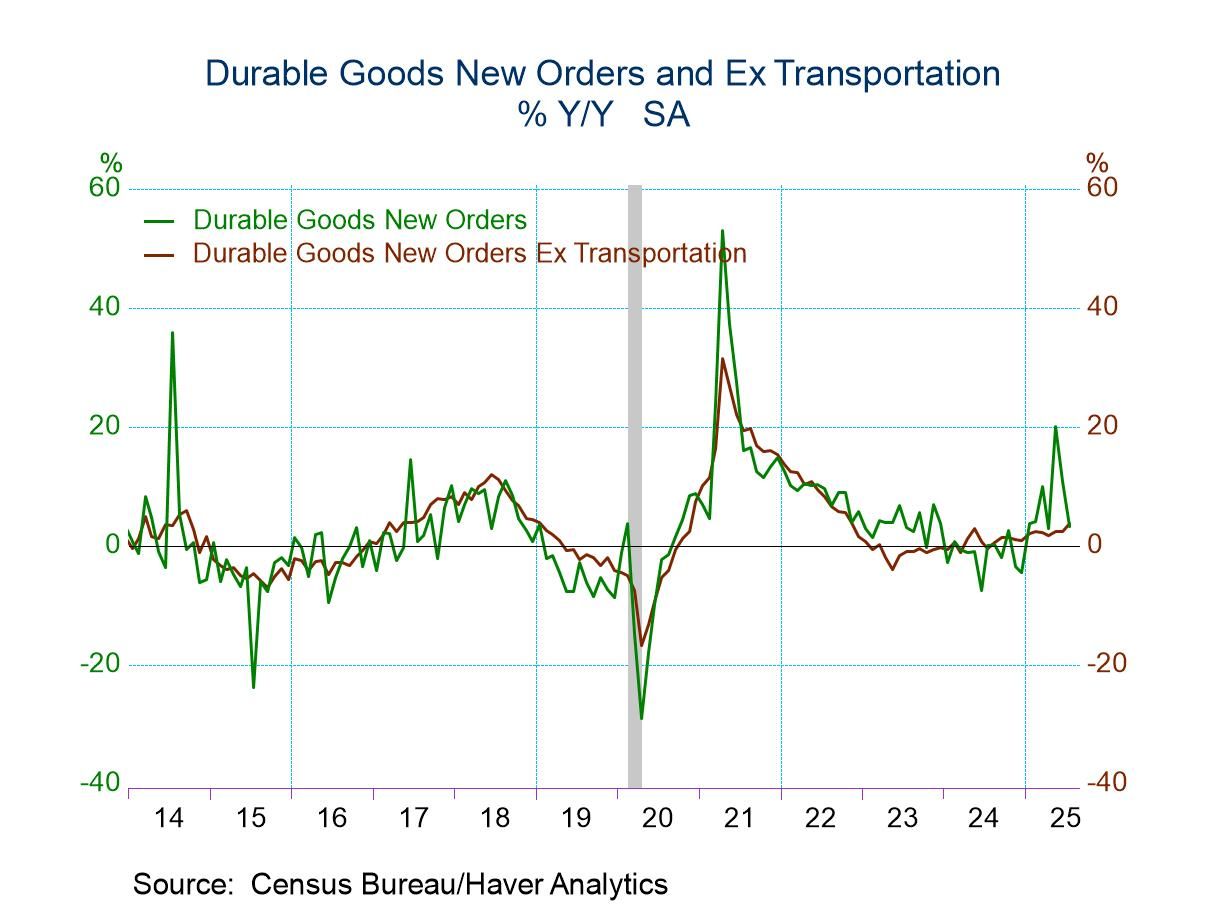 Global| Jun 08 2010
Global| Jun 08 2010U.S. Consumer Credit Expands Modestly In April
by:Tom Moeller
|in:Economy in Brief
Summary
The latest consumer credit numbers released late-yesterday indicated that credit rose $1.0B during April. However, the Federal Reserve revised the March figure to a sharp $5.4B decline from a $2.0B increase reported last month. While [...]
The latest consumer credit numbers released late-yesterday indicated that credit rose $1.0B during April. However, the Federal Reserve revised the March figure to a sharp $5.4B decline from a $2.0B increase reported last month. While these m/m figures should initially be interpreted with caution, the trend in credit usage seems to be turning away from the sharp reductions of last year. The y/y change has moderated to -3.2% from -4.4% at its worst last December and the three-month change is -2.0% (AR).
he most that can be said about the pullback in the usage of revolving credit is that it perhaps is stabilizing. An $8.5B April decline followed a revised $3.7B drop and the three-month change of $-9.4% was reduced from the worst of $-12.9B in January. Pools of securitized assets were virtually unchanged (-88.7% y/y) after a sharp March decline. Finance companies also held lending constant (+28.9% y/y) though commercial bank lending slipped (+79.7% y/y). Loans from credit unions also were constant (+5.5% y/y) while lending by savings institutions slipped (+15.1%).
Usage of non-revolving credit (autos & other consumer durables), which accounts for nearly two-thirds of the total seems firmer. It fell modestly during the recession but has increased this year. Usage rose $9.5B in April after falling $1.7B, but that March decline initially was reported as a $5.2B increase. Federal government & Sallie Mae lending expanded by three-quarters y/y while commercial bank lending rose 6.8% after last year's 1.0% increase. These gains offset a nearly one-half y/y decline in pools of securitized assets, a 16.6% fall in savings institutions, an easier 3.3% decline in finance companies and a 3.2% fall in credit union lending.
During the last ten years, there has been a 60% correlation between the y/y change in credit outstanding and the change in personal consumption expenditures. Moreover, these figures are the major input to the Fed's quarterly Flow of Funds accounts for the household sector.
Credit data are available in Haver's USECON database. The Flow of Funds data are in Haver's FFUNDS database.
Moving Beyond the Financial Crisis is today's speech by Fed Governor Elizabeth A. Duke and it can be found here here.
| Consumer Credit Outstanding (m/m Chg, SAAR) | April | March | February | y/y | 2009 | 2008 | 2007 |
|---|---|---|---|---|---|---|---|
| Total | $1.0B | $-5.4B | $-7.8B | -3.2% | -4.4% | 1.5% | 5.7% |
| Revolving | $-8.5B | $-3.7B | $-8.7B | -9.6% | -9.6% | 1.6% | 8.1% |
| Non-revolving | $9.5B | $-1.7B | $0.9B | 0.5% | -1.3% | 1.5% | 4.4% |
Tom Moeller
AuthorMore in Author Profile »Prior to joining Haver Analytics in 2000, Mr. Moeller worked as the Economist at Chancellor Capital Management from 1985 to 1999. There, he developed comprehensive economic forecasts and interpreted economic data for equity and fixed income portfolio managers. Also at Chancellor, Mr. Moeller worked as an equity analyst and was responsible for researching and rating companies in the economically sensitive automobile and housing industries for investment in Chancellor’s equity portfolio. Prior to joining Chancellor, Mr. Moeller was an Economist at Citibank from 1979 to 1984. He also analyzed pricing behavior in the metals industry for the Council on Wage and Price Stability in Washington, D.C. In 1999, Mr. Moeller received the award for most accurate forecast from the Forecasters' Club of New York. From 1990 to 1992 he was President of the New York Association for Business Economists. Mr. Moeller earned an M.B.A. in Finance from Fordham University, where he graduated in 1987. He holds a Bachelor of Arts in Economics from George Washington University.








